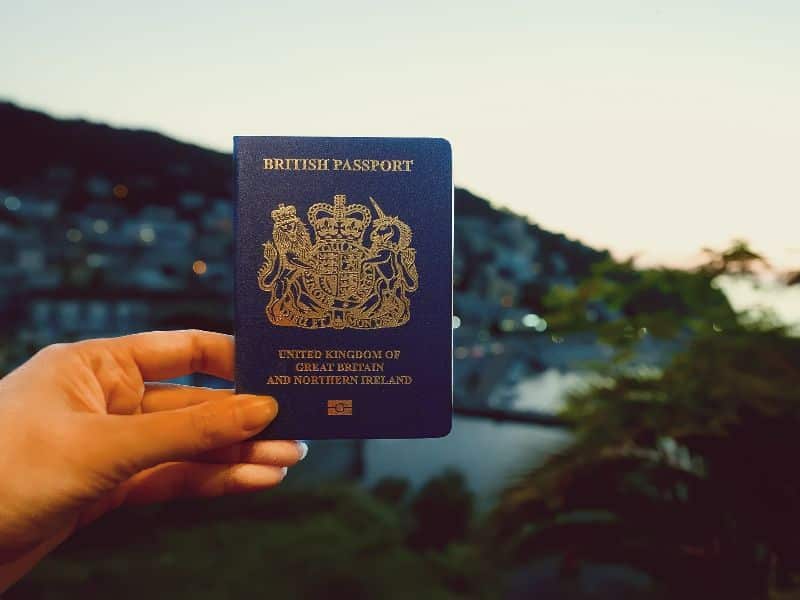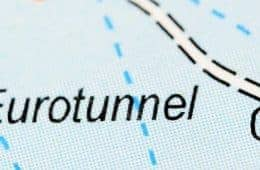
What documents do you need to travel to Europe from the UK?
23 September, 2025
Since the United Kingdom is no longer part of the European Union, different rules apply to British travellers heading to Europe with their caravan, motorhome or trailer tent. It’s important to check in advance which documents you need to bring so you won’t face any unpleasant surprises along the way. In this article, we’ll also explain the new Entry/Exit System (EES) that will soon apply to short stays in Schengen countries.
Table of contents
- Passport
- Visa
- Driving licence and vehicle documents
- Healthcare and travel insurance
- Pets
- New: the EU Entry/Exit System (EES)
- Which countries are part of the Schengen area?
- Practical tips for campers
Summary
If you’re travelling from the UK to Europe for a camping holiday, you’ll need a valid passport, and depending on your trip, additional documents such as vehicle papers, proof of insurance and a pet passport. British citizens can stay up to 90 days in the EU without a visa, though different rules apply to Ireland and Cyprus. Don’t forget healthcare cover with a GHIC card and travel insurance. From October 2025, the new EU Entry/Exit System (EES) will also affect UK travellers entering Schengen countries, with biometric checks replacing traditional passport stamps.
Passport
To travel to the EU, you must always carry a valid passport. This passport must be valid for at least three months after your planned departure date from the EU and must have been issued within the last 10 years.

When travelling to the EU, you must always carry a valid passport.
Visa
For holidays or short stays, British citizens do not need a visa if they are staying in the EU for a maximum of 90 days within a 180-day period. For longer stays, a visa or residence permit may be required.
EU visa rules do not apply to Cyprus and Ireland. These countries issue visas under their own national regulations. If you are planning to travel there, check with the respective embassy for up-to-date entry requirements.
Children and minors must also have their own passport and visa (if required).
Driving licence and vehicle documents
Are you travelling with your own car or motorhome? Your UK driving licence is accepted in most EU countries. In some cases, an International Driving Permit may be useful, depending on your route and destination. You should also carry the following documents:
• The vehicle registration certificate (V5C logbook)
• Proof of insurance
• A GB/UK sticker (unless you have a number plate with the UK identifier)
Make sure that all your vehicle documents are valid and up to date before you set off.
Healthcare and travel insurance
The old EHIC card (European Health Insurance Card) is still valid in many EU countries, but new applications are issued as a GHIC card (UK Global Health Insurance Card). This entitles you to state-provided medical care in the EU at local rates. However, it does not cover everything, so it’s highly recommended to take out additional travel insurance for extra peace of mind.
Pets
Taking your dog or cat on holiday? You’ll need a pet passport, which must include proof of a valid rabies vaccination. Some countries also require additional treatments, such as tapeworm treatment for dogs, so check the specific requirements of your destination in advance.

In October 2025, the EES will be introduced in phases, affecting travellers from the UK to Europe.
New: the EU Entry/Exit System (EES)
The new EU Entry/Exit System (EES) will be introduced from 12 October 2025, with full implementation expected by 10 April 2026. This system applies to short stays in Schengen countries by non-EU travellers, including UK citizens.
Instead of receiving a stamp in your passport, your details will be recorded digitally at every entry and exit. This includes your name, passport details, a facial image and fingerprints. The aim of EES is to make border checks faster and more secure, while also preventing overstays by accurately tracking how long travellers remain in the Schengen area.
For UK holidaymakers, this means that on your first trip after the system takes effect, you may need to provide biometric data such as fingerprints and a photo before crossing the border. On subsequent visits, the process should be quicker thanks to stored information and facial recognition technology.
Which countries are part of the Schengen area?
The Schengen area includes Austria, Belgium, Bulgaria, Croatia, Czech Republic, Denmark, Estonia, Finland, France, Germany, Greece, Hungary, Iceland, Italy, Latvia, Liechtenstein, Lithuania, Luxembourg, Malta, Netherlands, Norway, Poland, Portugal, Romania, Slovakia, Slovenia, Spain, Sweden, and Switzerland. The Republic of Ireland and Cyprus are not part of the Schengen area, and therefore EES does not apply when travelling to these countries.
Practical tips for campers
• Check the passport validity of all travellers (including children) well before departure.
• Keep copies or scans of all important documents (passports, insurance papers, vehicle documents).
• Bring documents that prove your accommodation, financial means, and return or onward travel – these may occasionally be requested at border controls.
• Make sure your insurance covers all the countries you are travelling through, including breakdown cover for your car, caravan or motorhome.





3 Comments
What about the fact that your caravan now needs to be registered for use in the Schengen zone?
Nocomment
No comment